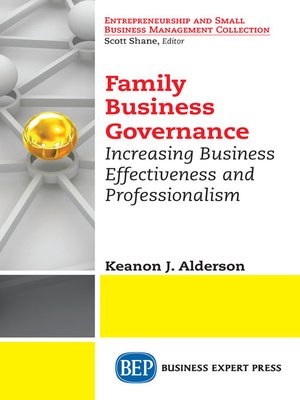Family Business Governance
ebook ∣ Increasing Business Effectiveness and Professionalism
By Keanon J. Alderson

Sign up to save your library
With an OverDrive account, you can save your favorite libraries for at-a-glance information about availability. Find out more about OverDrive accounts.
Find this title in Libby, the library reading app by OverDrive.



Search for a digital library with this title
Title found at these libraries:
| Library Name | Distance |
|---|---|
| Loading... |
Family business is the most prevalent form of business organization in the world. Much of the existing literature on family and corporate governance focuses on the larger and often publicly owned corporations instead of the unique and special issues of the much more prevalent privately held (usually smaller) family businesses. This book presents research-based information to provide the reader a deeper understanding of the complex nature of family owned businesses, their problems and challenges, and the unique governance structures and mechanisms that have been developed to properly guide a family business to greater effectiveness.
For the family, such structures include having family meetings, a family council, and a family constitution. For the business, the board of directors provides experienced and knowledgeable advice and recommendations, as well as oversight and monitoring activities. For the owners, a shareholder's council and an annual shareholder meeting allows increased communication and voting on decisions. These family governance mechanisms have been shown to increase communication, reduce conflict, and improve decision making and professionalism. Each governance tool will be explored in depth. The audience for this book is family business owners, consultants, practitioners, and family business scholars. Cases will provide readers an opportunity to apply their learning to real business problems.







